Marcia Thornton Jones's Blog, page 155
March 9, 2016
Play On!By Marcia Thornton JonesIn Central Kentucky, Marc...
 Play On!
Play On!By Marcia Thornton Jones
In Central Kentucky, March means one thing: basketball. All eyes focus on the road to the NCAA Tournament. This year, fan expectations were high from the get-go because the Wildcats were ranked #1 before a basketball even bounced on the court to start the season. But the Big Blue Nation became frustrated, disappointed, mad, and lost confidence when <gasp> tallies added up in the losses column. Good thing our team doesn’t pay much attention to the critics. Instead, they put in hours of practice to improve their skills. They listened to the coach and made adjustments. Most importantly, they NEVER stopped competing. Now, the wins far out-number those pesky losses so whether they walk away with the tournament trophy or not, they still had a winning season.
The same is true with my writing. I’ve been trying to start a new novel for way too long. But after a couple of false starts, I’m disappointed, frustrated, mad, and depleted of confidence because my early attempts fall way short of expectations. I need to stop thinking like a rabid basketball fan expecting perfection at the beginning of the season. Winning at writing is like basketball or any other endeavor. It involves practice, coaching, and continuing on in spite of setbacks, false starts, and even <gasp> losses. It’s time to play on.
So, let’s hear it…give me a W…give me an R…Give me an I-T-E…What’s that spell????
Published on March 09, 2016 20:31
March 8, 2016
Madness in March -- by Jane Kelley
No wonder there is madness in March. The sap is running! This is not a political comment, it really is.
Toward the end of last summer, when the sugar maple still had its bright red leaves, it stored a lot of starch in its wood. The leaves fell. So did the snow.
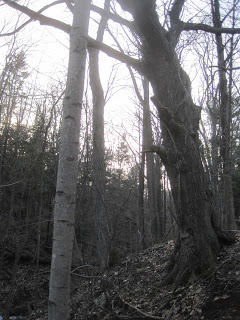
At the first hint of warmth, that starch is transformed into sucrose. The tree's roots suck up water from the soil. That water forces the sugary sap up toward the dormant buds. The sap will keep running for almost six weeks, until the warm weather causes the buds to open and all the sweet liquid has risen up through the tree.
The Native Americans discovered that if you make a cut in the bark, the sap oozes out. Each tree can spare about a gallon, without suffering too much damage. But it will take anywhere between 40 and 90 gallons of sap to make one gallon of maple syrup.
That sounds about right for the writing process.
Ideas accumulate over a long winter. (See all our hibernation posts last month.)
A thaw starts a rush of sugar straight to the head. This surge of inspiration is the madness.
Then all the sap that has been gathered must be boiled down. Some people use fancy machines. Others, like my brother, put a kettle on an outdoor fire and keep it boiling for hours and hours. The excess water is boiled away––rewriting the story reveals its essence. Then there is a final filtering to get rid of dirt and bugs––otherwise known as editing.
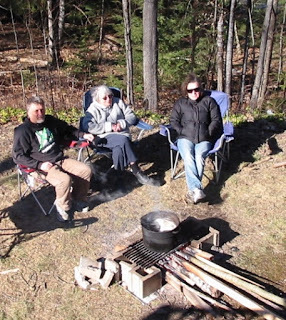 The writer at work -- with her mother and her brother.
The writer at work -- with her mother and her brother.
At long last, we have made a small amount of liquid gold.
 Which is also called a book
Which is also called a book
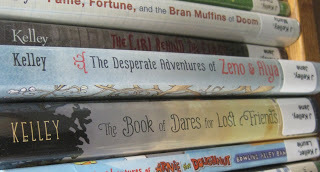
Toward the end of last summer, when the sugar maple still had its bright red leaves, it stored a lot of starch in its wood. The leaves fell. So did the snow.

At the first hint of warmth, that starch is transformed into sucrose. The tree's roots suck up water from the soil. That water forces the sugary sap up toward the dormant buds. The sap will keep running for almost six weeks, until the warm weather causes the buds to open and all the sweet liquid has risen up through the tree.
The Native Americans discovered that if you make a cut in the bark, the sap oozes out. Each tree can spare about a gallon, without suffering too much damage. But it will take anywhere between 40 and 90 gallons of sap to make one gallon of maple syrup.
That sounds about right for the writing process.
Ideas accumulate over a long winter. (See all our hibernation posts last month.)
A thaw starts a rush of sugar straight to the head. This surge of inspiration is the madness.
Then all the sap that has been gathered must be boiled down. Some people use fancy machines. Others, like my brother, put a kettle on an outdoor fire and keep it boiling for hours and hours. The excess water is boiled away––rewriting the story reveals its essence. Then there is a final filtering to get rid of dirt and bugs––otherwise known as editing.
 The writer at work -- with her mother and her brother.
The writer at work -- with her mother and her brother.At long last, we have made a small amount of liquid gold.
 Which is also called a book
Which is also called a book
Published on March 08, 2016 02:00
March 3, 2016
March Madness for Readers & Writers
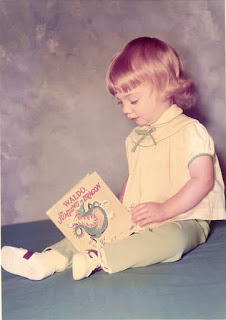 Reading has always been
Reading has always been my favorite sport!I'm not much for sports. I was the kid in elementary school who would volunteer to bang the erasers (yes, I am THAT old) just so I wouldn't have to suffer the humiliation of the recess dodge ball game.
In high school I made a deal with my coach: I would write his bus schedules if he would let me skip out of P.E. I gotta tell you, it was a pretty beautiful arrangement.
And even though I live in Alabama where college football is THE event of the year, I can take it or leave it.
As for basketball? Forget about it. I've got a zillion things I'd rather do!
Which is why I found myself Googling how to somehow bring March Madness to my life as a reader and writer. Here are some things I discovered:
You can use brackets to help decide which writing project should take priority.
You can extend the fervor of March Madness to "reboot" your writing life.
Teachers can use a March Madness format to encourage kids to write opinion pieces about the books they love... leading to an eventual #1 book.
You can use March as an alternate (or another!) NaNo month.
You can go back and read all the poems from the March Madness poetry contests at ThinkKidThink.
However you experience March Madness, I hope you enjoy it!
Irene Latham is a poet and novelist from Birmingham, Alabama. Her books include Leaving Gee's Bend, Don't Feed the Boy, Dear Wandering Wildebeest, and two new poetry collections When the Sun Shines on Antarctica and Fresh Delicious: Poems from the Farmers' Market. Reading has always been her favorite sport. www.irenelatham.com
Published on March 03, 2016 03:30
March 2, 2016
March Madness by Ann Haywood Leal

I know next to nothing about basketball, but when March Madness hits, I see people scrambling to predict who will win. They even put down money to back their frenzied calculations.
It can be like that with that first idea when you are writing. It explodes in a mad frenzy of possibilities. All we want is that big win at the end. And we want to get to the end. As soon as possible. Now. Do not pass Go. Do not pause to collect the two hundred dollars.
When we are first getting our story down on paper, it may be fragmented. As my writer friends know, I am a fan of working in coffee shops, and I use coffee shop analogies freely and often. So . . . imagine a busy coffee shop—in a big city. You have just moved to the neighborhood and you are visiting it for the first time.
 There is a lot going on, but a great deal of it is just a thin surface layer. You go into the coffee shop and the customers are all your characters, major and minor. You see them—you might see what they are wearing, but you really don’t know anything about them yet.
There is a lot going on, but a great deal of it is just a thin surface layer. You go into the coffee shop and the customers are all your characters, major and minor. You see them—you might see what they are wearing, but you really don’t know anything about them yet. 
You hear bits and pieces of conversations, but you aren’t interacting with anyone but the barista or the guy at the counter.
You are seated in a corner by yourself, trying to make sense of all that is going on around you. People are on their laptops, not paying any attention to you. People are in pairs and groups, having their own conversations. You are excited about being in this new place, but you really aren’t comfortable yet.
The next day, things get a little more familiar. You notice some people from the day before. Someone gives you a recognizing nod. You start to notice how the customers are interacting with each other. You sense the tension between the couple by the window. You notice the woman off to the side appears to have slept in her clothes. You start to wonder about their stories.
Each day, each revision, you add another layer.
You may think you have your story down pat—especially if you are an extensive note taker or an outliner. I heard about a writer, who wrote her entire novel in her head while she was gardening. Finished the entire thing. Then she went home and put the words down on paper.
We all want to be done. It’s human nature to want to see a job through to the end. It is the best feeling in the world to type THE END. But for a writer, the first time you type those words, it usually just means the beginning. It’s the beginning of your layering process. The beginning of your revision.
I used to hate it. But I look forward to it now. It means my words are turning into a real story. So don’t get sucked in by the March Madness. Slow down and enjoy the ride.
Published on March 02, 2016 15:13
March 1, 2016
SMACK DAB NEWS
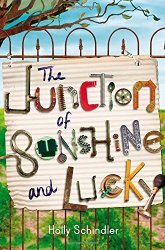 I'm delighted to announce that THE JUNCTION OF SUNSHINE AND LUCKY has made the 2017 Oklahoma Sequoyah Masterlist!
I'm delighted to announce that THE JUNCTION OF SUNSHINE AND LUCKY has made the 2017 Oklahoma Sequoyah Masterlist!
Published on March 01, 2016 05:00
February 26, 2016
INTERVIEW WITH MELISSA HART, AUTHOR OF AVENGING THE OWL
I'm utterly delighted to share a recent conversation I had with Melissa Hart, author of AVENGING THE OWL--a fantastic book young readers will absolutely devour:
1. AVENGING THE OWL has so many attention-grabbing aspects: the environment, dealing with life changes, Down syndrome, mental health issues, not to mention the STAR WARS connection. What piece came to you first? How did the book originate?
 It is pretty multifaceted, isn’t it! I volunteered at my local raptor rehabilitation center for eight years. During that time, a teen boy began volunteering on my shift. He’d apparently left his mandatory high school service hours until the last minute and could only complete them at the raptor center—all the other “good” non-profits had been taken. He came in despising birds, terrified of them. For several weeks, he struck me as sullen and resentful, completely unengaged. But he fell in love with the raven that lived at the center, and began learning about how smart these birds are. He spent more and more time teaching himself about ravens and how to provide enrichment for them when they’re living in a mew. Gradually, his enthusiasm extended to the raptors. He ended up a guest at my wedding (also at the raptor center) and gave me a beautiful sketch he’d done of me and an owl. I found his emotional transition to be absolutely fascinating, and I wanted to explore it in a novel.
It is pretty multifaceted, isn’t it! I volunteered at my local raptor rehabilitation center for eight years. During that time, a teen boy began volunteering on my shift. He’d apparently left his mandatory high school service hours until the last minute and could only complete them at the raptor center—all the other “good” non-profits had been taken. He came in despising birds, terrified of them. For several weeks, he struck me as sullen and resentful, completely unengaged. But he fell in love with the raven that lived at the center, and began learning about how smart these birds are. He spent more and more time teaching himself about ravens and how to provide enrichment for them when they’re living in a mew. Gradually, his enthusiasm extended to the raptors. He ended up a guest at my wedding (also at the raptor center) and gave me a beautiful sketch he’d done of me and an owl. I found his emotional transition to be absolutely fascinating, and I wanted to explore it in a novel. 2. I found myself gaining knowledge while being propelled by your characters. How much research was involved? What was your research made up of—library work or real-life experiences? How much time did you spend on research compared to writing?
I researched on the job, so to speak. As a volunteer raptor rehabilitator and educator, I spent eight years immersed in the world of owls, hawks, falcons, eagles, etc. My research for this book is made up of real-life experience, and I checked facts with my husband, Jonathan, who started volunteering at the raptor center the year before I did. As far as Eric’s character goes, my younger brother is a person with Down syndrome, and I grew up helping to care for him. I also worked for a few years as a special education teacher, and some of my students were people with Down syndrome.
3. I’m a SW Missouri native, and find myself often writing about my own area of the country—are you native to Oregon? How does living in your own area of the country shape your writing?
I’m actually not native to Oregon. I grew up very close to where Solo spends his childhood—he’s in Redondo Beach, and I grew up in Hawthorne (about six miles away) and in Oxnard, California on the beach. Like Solo, I missed the warm ocean and the constant sun when I moved up to Oregon 15 years ago. And like Solo, after I got over my initial shock at my adopted state’s rain and cold winters, I fell in love with the flora and fauna and the uncrowded beaches and forests and deserts. This love definitely shaped my descriptions of Solo as he begins to notice the trees and birds and lichen around him.
4. Can we expect another MG read set in these surroundings?
Most definitely. I’m finishing up a YA novel set in Costa Rica, and after that, I’m planning a middle-grade novel set again in Oregon. It may be a little more urban, but even our urban areas—at least in my hometown of Eugene—can get a little wild!
5. You’ve taught literature and writing for a wide variety of age groups and in a wide variety of formats (K-12, college, distance-learning, etc.) How has teaching shaped you as an author?
Teaching the subject of creative writing has improved my own writing one hundred percent. Most of the classes and workshops I’ve taught over the past 20 years involve a great deal of reading, and literary analysis. (You’ve got to do all the homework as the teacher, too—not just as a student!) I’ve found that when I’m analyzing a book or an essay or a short story in order to teach it to a class, I get a much better sense of how the author’s put the narrative together with respect to plot and characterization and other elements. I find that when I’m teaching narrative nonfiction, I get inspired to write more essays. Likewise, when I’m teaching creative writing to high school students, I’m excited to delve into fiction for middle-grade and young adult readers. Right now, I’m teaching a general nonfiction class to Master of Fine Art students for Northwest Institute of Literary Arts in Washington; the reading and writing assignments have inspired me to play with new forms such as flash-nonfiction (750 words or fewer) and essays inspired by pop culture such as the TV show with which I grew up—Land of the Lost.
Solo learns many lessons, not the least of which occurs when he releases the owl and realizes his anger has become a memory. Is this a lesson you were especially interested in sharing with your own students? Do you often find yourself incorporating life lessons into your writing that you wish you could share with your younger students?
I didn’t consciously put that lesson into the book to teach readers anything. I’ve studied a lot of Buddhist philosophy, mostly in the form of books and audio from Jack Kornfield of Spirit Rock Meditation Center, and some of these lessons come directly from Buddhist teachings. I haven’t mastered any of them. This idea of releasing anger is a skillful one, to be sure, and I have to relearn it over and over. Mostly, I deal with anger by going for a long run. But releasing an owl, or otherwise immersing oneself in a hobby or passion, is a wonderful distraction from anger. It’s important, though, to own your anger, as well. The Buddhists like to quote poet William Blake, saying, “The tygers of wrath are wiser than the horses of instruction.” I think that means that sometimes, instead of trying to rationalize our anger, we just need to immerse ourselves in it—kind of like Lewis Black’s Anger character in the film, Inside Out. Now that dude owns his anger!
6. Solo’s friendship with Eric is compelling and again a heart-warming learning experience. Your author bio indicates you have a brother with Down syndrome. Did any of your own life experiences with your brother become part of AVENGING THE OWL?
I grew up feeling the tension between my brother and father. Some of this tension informs Eric’s relationship with his own father in the novel. While specific anecdotes didn’t make it into the book, the scenes with Eric are informed by my brother’s sweet temperament—particularly as a kid Eric’s age, he had such a kind heart, and he was absolutely hilarious . . . intentionally. He loved making people laugh. Unlike Eric, my brother doesn’t like to hike, and doesn’t particularly care about insects or nature. He’s much more interested in the Los Angeles Lakers and hanging out with his girlfriend, a woman with Down syndrome.
7. I’m especially fond of the passage late in the book in which Solo realizes that “people hate what they don’t understand.” It’ s a lesson we all need to be reminded of right now. Was there a time in your own life that you needed to be reminded as well?
Good question. I admit, I’m not overly fond of the people who took over the Malheur National Wildlife Refuge in January. I’ve been there several times with my family, and it’s a lovely, special place for people who just want to immerse themselves in the natural world. I resent the fact that this group with their guns and intimidating appearances kept bird-lovers and others from getting to explore this area of Eastern Oregon. Their actions also made life difficult for the Refuge’s employees and volunteers, and other demographics such as kids just trying to get to school. While I won’t say I hate the people who took over the Refuge, Solo reminds me that I need to educate myself more fully about their perspective on the land rights issue and at least attempt to understand their anger.
I was intrigued by the way you incorporated screenplay-style writing. Is this only because Solo writes screenplays? Or do you find that young readers “see” books playing out in their minds like movies?
I hadn’t the faintest idea how to write a screenplay scene before I wrote Avenging the Owl. But Solo’s father works in Hollywood, and it felt natural for Solo to take a screenwriting course so close to that city. Screenwriter Cynthia Whitcomb up in Portland, Oregon, has been teaching incredibly successful screenwriting classes for years; several of my friends have taken them and talked about all that they’ve learned, so screenwriting’s been on my mind. I think most readers—young and old—see novels as playing out in their minds like movies. The trick as an author is to help them imagine each scene as vividly as possible so that they’ll keep reading instead of turning on the TV!
8. How about you—is there a screenplay in your own future? If not, what can we expect to see from you next?
I don’t have plans to write a screenplay. As soon as I’m finished with the YA novel and the new MG novel, I’m hoping to sit down and write a historical novel based on the lives of my great-grandparents who ran away separately as teenagers to join the circus, where they met and married even though they didn’t get along. I can’t tell yet whether it wants to be a book for children, for adults, or for both. Come to think of it, I could learn a thing or two from Solo--maybe it should be a screenplay!
~
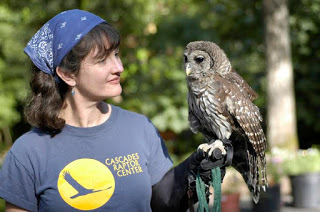 Keep up with Melissa -
Keep up with Melissa - Website: www.melissahart.comInstagram: WildMelissaHartFacebook: https://www.facebook.com/MelissaHart.Author
Published on February 26, 2016 05:00
February 25, 2016
SHORT READ FOR AN EXTRA DAY (HOLLY SCHINDLER)
It says something about how busy we’ve all become when we see leap year’s extra day as an incredible gift. One day—and we’re ready to celebrate (either because we see it as an opportunity to get yet more loads of work done or because we see it as a chance to indulge in a day all to ourselves--a rare treat.)
Everybody feels pressed for time—even the young readers we write for. I know I always look forward to an hour of TV at the end of a long day. Together, my family buys a TV series, and once everyone’s finally clocked off, we watch an episode. One episode. It’s nice to get an hour of entertainment.
I also find myself gravitating toward short stories. I love being able to sit down and read a story all in one gulp. So I’ve started putting out short story e-reads for kids.
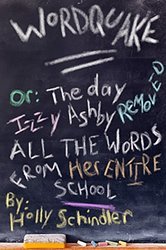 "Wordquake" is the first release—it’s about a girl who hates reading. Hates. And accidentally removes all the words from her school. Chaos ensues.
"Wordquake" is the first release—it’s about a girl who hates reading. Hates. And accidentally removes all the words from her school. Chaos ensues.Librarians are already in love with Wordquake: Goodreads
You can download from: Amazon B&N Kobo iBooks
Sit down with your young reader—maybe during the upcoming spring break, or during the evening on that extra February day—and read the story out loud together. I hope it offers a fantastic hour of entertainment, at the point at which you and your young reader need it the most.
Published on February 25, 2016 05:00
February 22, 2016
Smack Dab in the Classroom by Dia Calhoun: Dreams as Writing Prompts
Writers often use their dreams as inspiration. So here is an excellent way to tap into kid’s creative powers—especially those kids who say they have no ideas. On Monday, give then an assignment to remember and write down any dreams they can remember over the following week. Some kids will remember many, some only a few. But over the course of a week everyone should have at least two dreams they remember.
The following Monday, ask them to write the story of their dream—and complete it. Now for some the actual dream may be the beginning of the story, and they will use it as a point of departure. For others the dream may be the end, and they need to figure out the beginning.
Also, if they’ve remembered more than one dream, as them to combine the two dreams into one story. The advantage to this is the student already has something brewing in their mind via the dream. And beginning to imagine around the dream often unlocks ideas.
I’ve written some of my best work this way.
The following Monday, ask them to write the story of their dream—and complete it. Now for some the actual dream may be the beginning of the story, and they will use it as a point of departure. For others the dream may be the end, and they need to figure out the beginning.
Also, if they’ve remembered more than one dream, as them to combine the two dreams into one story. The advantage to this is the student already has something brewing in their mind via the dream. And beginning to imagine around the dream often unlocks ideas.
I’ve written some of my best work this way.
Published on February 22, 2016 22:00
Women Who Changed the World by Laurie Calkhoven
I love the idea of hibernating. I see snowstorms and polar vortexes as an excuse not to leave the house (or get out of my pajamas, but that’s another story). I wouldn’t be at all surprised to learn that I was a hermit in a former life.
But hibernation isn’t in the cards for me this year because this happened:

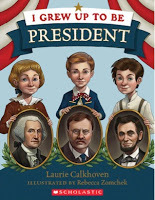 WOMEN WHO CHANGED THE WORLD is a book that grew out of school visits. I would talk to the kids about my other collective biography, I GREW UP TO BE PRESIDENT, and say, “there’s going to be a girl in this book one day.”
WOMEN WHO CHANGED THE WORLD is a book that grew out of school visits. I would talk to the kids about my other collective biography, I GREW UP TO BE PRESIDENT, and say, “there’s going to be a girl in this book one day.”
I got tired of waiting, so I decided to write a book about strong, interesting American girls who grew up to change the world. It was just published, in time for Women’s History Month. To celebrate, I’m offering free 20-30 minute Skype sessions in March and April to classes, book clubs, and scout troops who have read the book.
If you’re a teacher, librarian, or book club leader, e-mail me to set up a date and time: lcalkhoven@me.com
I’d love to hear how your young readers are going to change the world.
But hibernation isn’t in the cards for me this year because this happened:

 WOMEN WHO CHANGED THE WORLD is a book that grew out of school visits. I would talk to the kids about my other collective biography, I GREW UP TO BE PRESIDENT, and say, “there’s going to be a girl in this book one day.”
WOMEN WHO CHANGED THE WORLD is a book that grew out of school visits. I would talk to the kids about my other collective biography, I GREW UP TO BE PRESIDENT, and say, “there’s going to be a girl in this book one day.”I got tired of waiting, so I decided to write a book about strong, interesting American girls who grew up to change the world. It was just published, in time for Women’s History Month. To celebrate, I’m offering free 20-30 minute Skype sessions in March and April to classes, book clubs, and scout troops who have read the book.
If you’re a teacher, librarian, or book club leader, e-mail me to set up a date and time: lcalkhoven@me.com
I’d love to hear how your young readers are going to change the world.
Published on February 22, 2016 03:44
February 18, 2016
Coming out of Hibernation (February theme) by Claudia Mills
I've been having the least-pleasant form of writerly hibernation: writer's block, where I'm not curled up cozily in my warm, snug den snoozing the winter away, but knotted up inside myself in frozen frustration wondering when I'll get a new idea again.
But here in rural Indiana, after weeks of gray skies and cold temperatures, the snow is melting under the irresponsible late February sun which is doing its best to tempt the crocuses to sprout too soon.
This put me in mind of a poem I wrote when I was in high school. It was the early 1970s, and I was definitely one of the first Earth Day tree huggers. Actually, I was a tree kisser, and much teased for it by classmates. I was also someone maligned for talking to flowers. So I wrote this:
They say she talks to daffodils
And through the school the story spread.
Oh, the tales that they would tell
If they knew what the flowers had said!
So I think, as I emerge from my hibernation of the writer's soul, it's time for me to stop worrying about the Next Big Idea and just talk to some daffodils and see what they say. Talk to some imaginary characters in my head and listen for their replies. I won't worry about what censorious classmates - or editors, or reviewers - might think.
My task right now is just to listen to the flowers.

But here in rural Indiana, after weeks of gray skies and cold temperatures, the snow is melting under the irresponsible late February sun which is doing its best to tempt the crocuses to sprout too soon.
This put me in mind of a poem I wrote when I was in high school. It was the early 1970s, and I was definitely one of the first Earth Day tree huggers. Actually, I was a tree kisser, and much teased for it by classmates. I was also someone maligned for talking to flowers. So I wrote this:
They say she talks to daffodils
And through the school the story spread.
Oh, the tales that they would tell
If they knew what the flowers had said!
So I think, as I emerge from my hibernation of the writer's soul, it's time for me to stop worrying about the Next Big Idea and just talk to some daffodils and see what they say. Talk to some imaginary characters in my head and listen for their replies. I won't worry about what censorious classmates - or editors, or reviewers - might think.
My task right now is just to listen to the flowers.

Published on February 18, 2016 03:05



